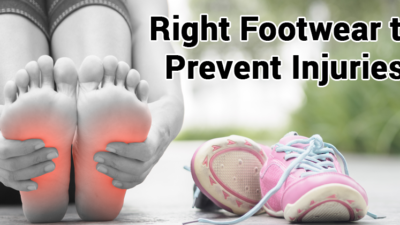Arthritis is known to be a condition causing pain and joint inflammation. Medical treatments are considered the most effective, but you can use home remedies coupled with lifestyle changes to help lower the symptoms. Arthritis affects the majority of the elderly population, though it can affect people of other ages including children.
It’s believed there are over 100 different types of arthritis and their related diseases. The most common are rheumatoid arthritis, which results when your immune system mistakenly fights your joints or other parts of your body, causing inflammation. Meanwhile, osteoarthritis is characterized by the wearing and tearing of cushions in your joints that may cause pain, stiffness, and swelling.
Care For Arthritis Patients
Most elderlies find themselves in nursing homes for the aged, and they’re assigned with nurses who take care of them. However, many of them become victims of abuse, neglect, and mistreatment. Due to their dependent nature, it becomes difficult for them to say what they’re experiencing. The moment you realize abuse in a certain nursing home, it’s good to report it. You can click here for more info on the kinds of abuse elderly people face and the steps to take in such instances.
Apart from having your loved one stay in a nursing home, you may as well keep them at your home. With the following measures, you can help manage their condition.
1. Aquatic Exercises
It’s believed aquatic exercises are helpful for arthritis patients since the resistance of water is beneficial in increasing the intensity of exercise. Also, water buoyancy helps in carrying your body weight, which relieves body pressure on your joints.
Aquatic body exercises are attributed with the following benefits too:
- Reduced body fat
- Better range of motion
- Better life quality and mood
With regular exercise, arthritis pain is expected to reduce. It’s believed having aquatic exercises for 40-60 minutes three times a week has the potential to give continued pain relief.
2. Cold and Hot Therapy
Cold and heat treatments are thought to be two different ways to effectively reduce arthritis pain. Heat therapy may soothe your stiff joints and painful muscles, as well as improve blood flow. On the other hand, cold therapy may help by reducing swelling, numbing the pain, and slowing blood circulation.
You should try alternating these two kinds while observing keenly in case of complications resulting from the treatments. Once you notice some damages, you should discontinue the therapy.
Increasing temperature in concerning areas can alleviate arthritis. Some of the common heat treatments are:
- Taking a warm shower or bath in the morning to ease stiffness
- Smearing warm paraffin wax on your aching joints
- Putting hot water bottle or heating pad on the aching joints
Meanwhile, medics believe cold treatments shouldn’t be more than 20 minutes. Such treatments are:
- Having a cold pack
- Placing the aching joint in ice water
- Wrapping ice with a towel and placing it on the painful areas
3. Massage
Massaging painful joints and muscles regularly may help in calming arthritis. Medical professionals believe massage brings down the production of cortisol stress hormone and also the neurotransmitter connected to pain. Massage may also raise your moods by improving the levels of serotonin.
Moderate-pressure massage is usually preferred over light-pressure massage. It’s said that enough massage can lower osteoarthritis symptoms and can reduce stress.
4. Vitamin D
Vitamin D is important in the formation of strong bones and in keeping your immune system properly functioning. Doctors believe individuals with arthritis tend to have low vitamin D amounts compared to people without the condition. People with the least level of vitamin D are thought to experience the highest effects of arthritis.
5. Omega-3 Fatty Acids
It’s thought omega-3 fatty acids are essential to help lower body inflammation and to boost and regulate your immune system. These fatty acids are also believed to be able to improve symptoms, though further studies to fully confirm this has to be conducted.
Common sources of omega-3 fatty acids include seeds, nuts, and cold-water fish like tuna, salmon, and sardines. You may also use omega-3 supplements which are readily available in most pharmacies and health stores.
6. Healthy Diet
A diet of vegetables, fruits, and whole foods easily improves your immune system and general body health. Medical professionals believe some types of dietary foods can affect individuals living with rheumatoid arthritis and osteoarthritis. Therefore, you need to get a proper diet specification from your doctor.
It’s believed that a plant-rich diet provides your body with antioxidants, which help in reducing inflammation by removing free radicals found in your body. On the contrary, a diet consisting of processed foods, red meat, added sugar, saturated fat, and salt can worsen the inflammation. This class of foods may also result in other conditions such as obesity, high blood pressure, high cholesterol, heart disease among other complications, making them unhealthy for patients.
7. Meditation
Relaxation and meditation may be beneficial to reduce pain in your joints because it lowers your stress levels and it helps you cope better. Lowering your stress level may also reduce inflammation, so it’s advisable to practice yoga and tai chi as they both incorporate meditation, breathing exercises, and relaxation techniques. Medical doctors believe regular mindful meditation can help people with arthritis.
8. Acupuncture
Acupuncture is a Chinese way of treatment by inserting small needles into certain points of your body. This is thought to redirect energies and restore body balance. Even though there isn’t much existing evidence on its benefits, the level of risking harm is considered low.
9. Weight Management
Monitoring your weight is highly significant because it can add tension to your feet and knees. By combining a balanced meal and active lifestyle, attaining an optimal weight is achievable. But if you’re having a hard time, consult your doctor for expert advice.
Conclusion
Though arthritis might be a progressive medical condition, there are several interventions available. However, having the above remedies alongside treatments coming from a medical professional can give better results in relieving pain and boosting mobility. Consider the ideas mentioned here and incorporate these into your lifestyle as you manage your condition at home.







 This article changed my life!
This article changed my life! This article was informative.
This article was informative. I have a medical question.
I have a medical question.
 This article contains incorrect information.
This article contains incorrect information. This article doesn’t have the information I’m looking for.
This article doesn’t have the information I’m looking for.